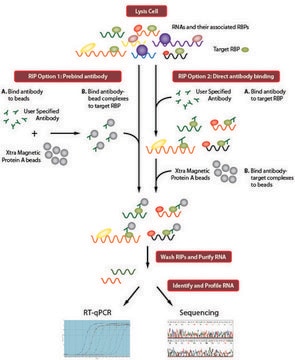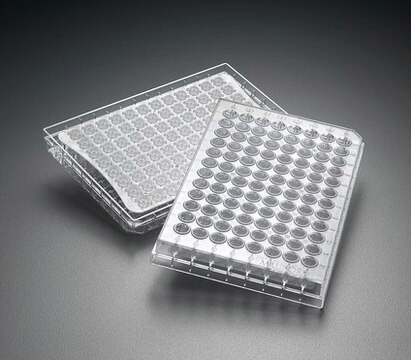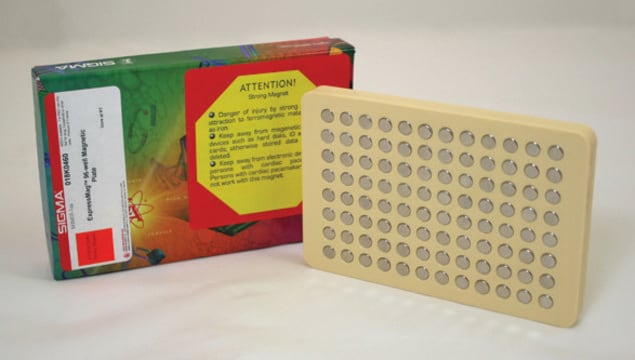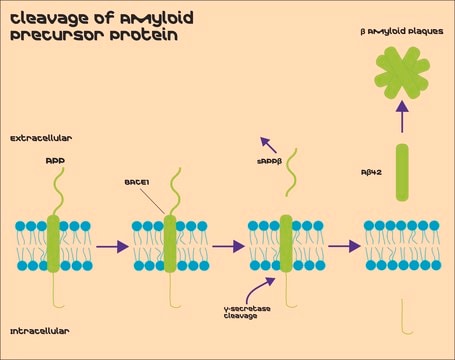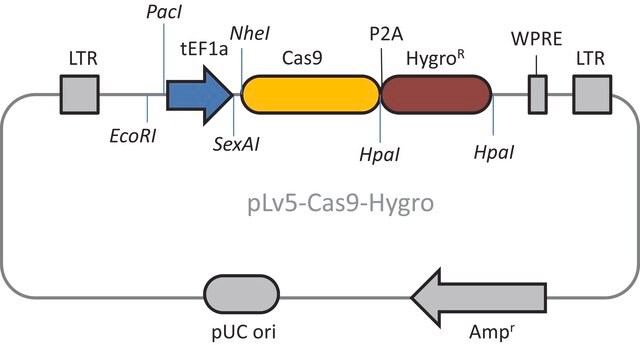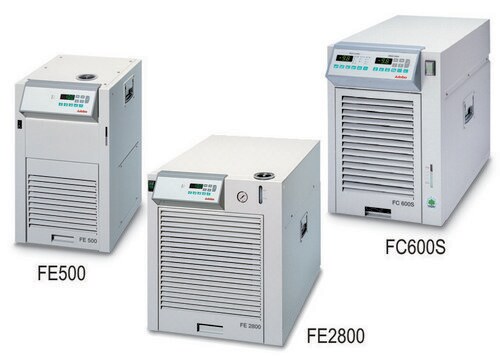SH2131
MISSION® shRNA Human Gene Family Set, Lentiviral Particles
Ubiquitin Ligases (E1,E2,E3)
Iniciar sesiónpara Ver la Fijación de precios por contrato y de la organización
About This Item
Código UNSPSC:
41106609
NACRES:
NA.51
Productos recomendados
¿Está buscando productos similares? Visita Guía de comparación de productos
Categorías relacionadas
Descripción general
Lentiviral particles (representational, plate titer) are provided in 96-well plates that are barcoded for simple identification. Aliquots of 4 x 50μl are provided to prevent the need for excessive freeze/thaw, and maximize functional viral particles. Each gene family set is representationally titered (10% of clones). Fully titered sets are also available, for more information inquire at RNAi@sial.com. A CD containing RefSeq, gene description, gene symbol, clone ID, hairpin sequence, locus link, and plate map positions are provided with the gene family set.
Otras notas
Each MISSION shRNA clone is constructed within the lentivirus plasmid vector, pLKO.1-Puro, followed by transformation into Escherichia coli. The pLKO.1-Puro vector contains bacterial (ampicillin) and mammalian (puromycin) antibiotic resistance genes for selection of inserts in either bacterial or mammalian cell lines. Each clone set consists of an average of 3-5 constructs that have been designed against each target gene using a proprietary algorithm. Therefore, a range of knockdown efficiency, with at least one construct from each gene set being >70%, can be expected when using these clones. This allows one to examine the effect of loss of gene function over a large series of gene knockdown efficiencies. Each shRNA construct has been cloned and sequence verified to ensure a match to the target gene.
For a detailed listing of other available gene family sets, visit the gene family set website.
Number of Genes: 341, Number of Clones: 2081
The exact gene and clone count at time of purchase may vary slightly as the TRC library is continually updated.
Información legal
Use of this product is subject to one or more license agreements. For details, please see http://sigmaaldrich.com/missionlicense .
MISSION is a registered trademark of Merck KGaA, Darmstadt, Germany
Código de clase de almacenamiento
12 - Non Combustible Liquids
Clase de riesgo para el agua (WGK)
WGK 3
Punto de inflamabilidad (°F)
Not applicable
Punto de inflamabilidad (°C)
Not applicable
Equipo de protección personal
Eyeshields, Gloves, multi-purpose combination respirator cartridge (US)
Certificados de análisis (COA)
Busque Certificados de análisis (COA) introduciendo el número de lote del producto. Los números de lote se encuentran en la etiqueta del producto después de las palabras «Lot» o «Batch»
¿Ya tiene este producto?
Encuentre la documentación para los productos que ha comprado recientemente en la Biblioteca de documentos.
Timothy Cardozo et al.
BMC biochemistry, 8 Suppl 1, S9-S9 (2007-12-06)
Recently, the ubiquitin proteasome system (UPS) has matured as a drug discovery arena, largely on the strength of the proven clinical activity of the proteasome inhibitor Velcade in multiple myeloma. Ubiquitin ligases tag cellular proteins, such as oncogenes and tumor
Kim Newton et al.
Cancer investigation, 25(6), 502-513 (2007-09-21)
The regulated degradation of cellular proteins by the ubiquitin-proteasome system impacts a range of vital cellular processes in both normal and cancerous cells. An ubiquitin-activating enzyme (E1), ubiquitin-conjugating enzyme (E2), and ubiquitin ligase (E3) catalyzes the conjugation of the protein
Joshua P Klopper et al.
Molecular cancer, 8, 16-16 (2009-03-10)
Metastatic melanoma has a high mortality rate and suboptimal therapeutic options. Molecular targeting may be beneficial using the rexinoid LGD1069, a retinoid x receptor selective agonist, and thiazolidinediones (TZD), PPARgamma selective ligands, as novel treatments. Mouse xenograft models with human
Courtney G Woods et al.
Toxicology and applied pharmacology, 238(1), 27-36 (2009-04-21)
Hypochlorous acid (HOCl) is potentially an important source of cellular oxidative stress. Human HOCl exposure can occur from chlorine gas inhalation or from endogenous sources of HOCl, such as respiratory burst by phagocytes. Transcription factor Nrf2 is a key regulator
Nuestro equipo de científicos tiene experiencia en todas las áreas de investigación: Ciencias de la vida, Ciencia de los materiales, Síntesis química, Cromatografía, Analítica y muchas otras.
Póngase en contacto con el Servicio técnico

